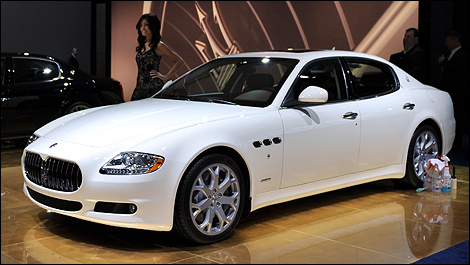http://www.mercurynews.com/business/ci_20051131
For years, the electric vehicle industry has been eager to build a better electric car battery: one that extends range while having a longer overall life, is affordable, quick-charging and safe.
Now Envia Systems, a start-up based in the East Bay city of Newark, plans to announce Monday that it has achieved a critical milestone: a rechargeable lithium-ion battery with an "energy density" of 400 watt-hours per kilogram, the highest energy density known to be recorded.
When commercialized, Envia says the 400 wh/kg battery, with a range of 300 miles and a cost of about $25,000, will slash the price of electric vehicles and make them more affordable for mainstream consumers.
"My dream is to build an automotive supply-chain for the electric car in the United States and reduce our dependence on foreign oil," said Envia CEO Atul Kapadia in an e-mail Sunday.
Envia will make its announcement at the ARPA-E Innovation Summit in Washington, D.C. Monday. The start-up received a $4 million grant from ARPA-E in December 2009 to develop advanced lithium-ion batteries for electric cars. It went on to raise $17 million in venture capital from General Motors Ventures, Bay Partners, Redpoint and Pangaea Ventures.
"Envia's new battery technology represents exactly the kind of innovation and breakthroughs that ARPA-E is looking for from the American research and development community," said ARPA-E Director Arun Majumdar in a prepared statement "We hope
that this low cost and high density battery technology enables widespread adoption of electric vehicles across the country and around the world."
Batteries are complex systems that convert stored chemical energy into electricity. Researchers say advances often involve trade-offs: improving range may result in skyrocketing costs, or a shorter battery life.
Measured as kilowatt hours per kilogram or liter, "energy density" determines range: The more watt hours, the more miles a car can travel on a single charge. Low-cost, high-energy density batteries are the holy grail. Battery costs are expected to come down due to volume manufacturing, but energy density has been a much harder goal to achieve.
Kapadia said that Envia's hard-working team of engineers developed the technology from scratch. After testing the battery in-house, additional testing was performed by the Electrochemical Power Systems Department at the Naval Surface Warfare Center in Indiana. The company is now in discussion with auto manufacturers.
"Rather than just a proof-of-concept of energy density, I am pleased that our team was successful in actually delivering 400 Whkg automotive grade 45 Amp-hour lithium-ion rechargeable cells," said Sujeet Kumar, Envia's co-founder and CTO, in a prepared statement.
The Tesla Roadster, Nissan Leaf and Chevrolet Volt all use some form of lithium-ion chemistry in their batteries. First commercialized by Sony in 1991, lithium-ion batteries are widely used in consumer electronics such as laptops and cell phones but are relatively new in cars. The Bay Area -- home to Palo Alto-based Tesla Motors(TSLA), the Lawrence Berkeley National Laboratory and at least two dozen battery startups -- has emerged as one of the nation's leading hubs of battery innovation.
The basic guts of a battery include a negatively charged anode, a positively charged cathode and the electrolyte. When a battery is fully charged, the lithium ions are concentrated in the anode. As the battery discharges, the ions flow to the cathode and current flows through the electric circuit, releasing energy. Many battery startups are experimenting with battery chemistry; Envia started with the cathode, moved on to the electrolyte and then the anode.
While there's been talk in the industry of moving "beyond lithium" and using new materials, many expect lithium-ion batteries to remain dominant in the coming decades.
"The rumors of the demise of Li-ion batteries were greatly exaggerated," said Kapadia.


